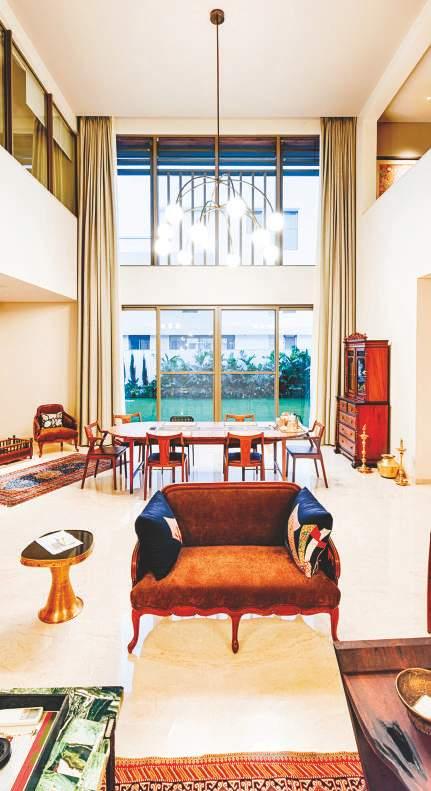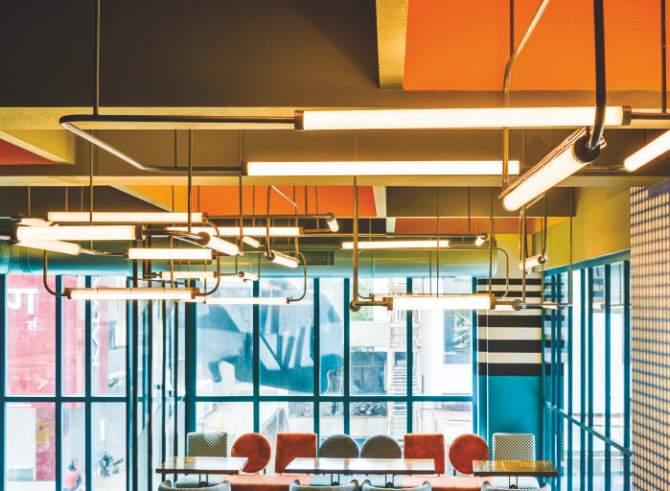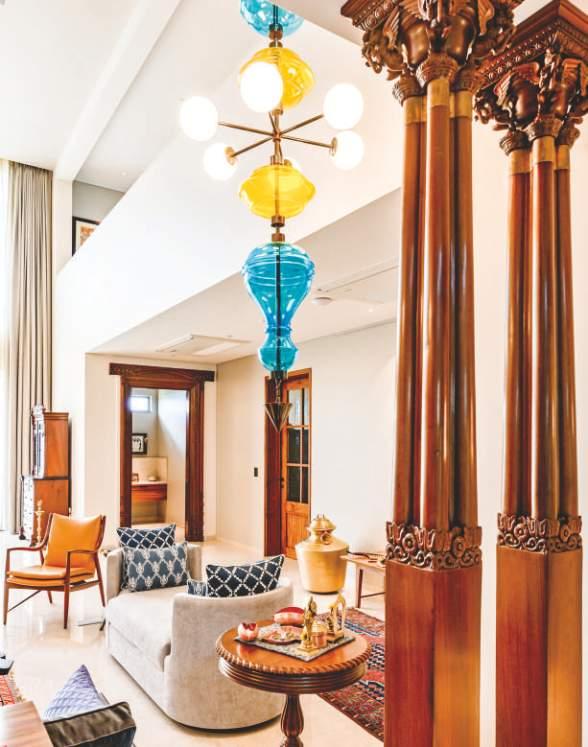
6 minute read
Light design tends to be very project specific
iughasiudghubonflkn[oe r
Ar. Arjun Rathi, Principal Designer, Arjun Rathi Design
Advertisement

An architect and light designer by profession, Arjun Rathi belives that globalisation has amplified the importance of light design. His studio Arjun Rathi Design has been responsible for the creation of exclusive collections which adorn a long list of high-rises, commercial spaces and individual properties.
What is your idea of a good design? The first sign of good design is the emotional connect it establishes with the end user. This is a sort of relevancy which exists in any element of creativity - be it light design, furniture design or any other interior accessory. Even great works of art are famous because of the way they connect with the individual minds. Having said that the object of design is destined to serve a function, besides which it is beautiful, at times ostentatious and also enhances the look and feel of the space in question.
When it comes to light design, does the definition remain the same or does it get altered? Is it static and dynamic? Lighting is one of the key aspects of interior design. It adds to the perception one has about a space. When done correctly it woos and surprises otherwise even well-designed interiors fail to impress. Light design tends to be very project specific, there’s no single set formula which can be put to work. So I like to believe that light design is indeed dynamic, since the character of light design, among other factors is facilitated by the nature of the project in question.
With increasing globalisation and with more Indians travelling these days, unlike earlier, how has it altered the taste of Indians when it comes to designer lighting? Globalisation is making people more
aware of what they can connect with. It has also amplified the importance of light design. Well-travelled Indians are exposed to a design syntax which they remained oblivious to, for a long time. People travel, visit branded hotels, check out the tourist hot-spots and observe. Fascinated by the elements of design they are exposed to, once back home, they try to recreate a similar

look and ambience in their living and commercial spaces. And this becomes their ideal style of design. This trend has been ongoing especially in the decorative lighting segment.
As a light designer, does it kind of constrain your freedom of creative expression when somebody is telling you to duplicate or to create a replica? A lot of clients ask for replicas but that’s something we don’t do. One thing, what the studio does do is - based on the input we try to gauge the clients requirement. We embrace a design syntax keeping in mind the reference provided and come up with a custom designed product. This leads to the creation of a product which not only caters to the clients design taste but is also exclusive. In fact our studio is known for its exclusivity. Our custom designed pieces have much to do with the reputation we command in the market.
When it comes to designing lights for living and commercial spaces, what is the difference? With residential projects, aesthetics are paramount. And functionality can be done in combination with technical aspects being addressed. In commercial spaces, we have to start with functionality and then work backwards to make it more aesthetic. In offices, people spend eight to ten productive hours a day, hence the lighting has to be extremely functional for the user who’s using it over there. When you go back home, you want the light to

The Umbrella Chandelier for a residence in Hyderabad The Loop Light installation for a restaurant in Andheri, Mumbai

create a very nice and warm atmosphere. Hence light design in residences is more to do with aesthetics and functional in commercial projects.
When it comes to residential and office lighting what are some of the key aspects to look out for? In office lighting one key thing to look at is the colour temperature. Mainly there is no hue lighting in offices. Certain colour temperatures are known to activate the mind, so when white light is utilised in office spaces, it is more or less 4,000-6,000 degree Kelvin. Likewise warmer colours like yellow or slightly amber colours, have a calming effect which helps the mind relax.
In residential spaces individual behaviour styles matter. For example, if somebody likes to read a lot in the bedroom, you can serve that purpose with a decorative lamp or with a really slim spotlight. if one prefers a bit of status and opulence in the space that’s where decorative lights can also take over. So it boils down to the project requirements in a way.
As a light designer, what are the different materials you have flirted with to design your products? We have been exploring with quite a few materials. Initially our exploration led us to utilise copper, brass, steel, including a lot of experiments with metal castings and textures. Then it evolved into blown glass and cast glass. Of late, we are also experimenting with sustainable materials like bamboo boards.
Tell us something about your latest projects We have recently finished a residential project in Hyderabad and our client was extremely excited to use our Shikhara hanging pendant lamp. It’s actually the same light that which won a LIT award. The client had designed the interiors herself and the way she built the space to suit the Shikhara light, just felt like the space was designed or stylised for the light itself. The light was the first accessory to be finalised before a final call was

The Shikhara Hanging Pendant for a residence in Hyderabad taken on furniture design and the look of the interiors itself. A deeply gratifying project I must say!
What are some of the popular products in your product portfolio? We have designed numerous collections. Our products like the loop lamp and arch lamp espouse minimalism and is very well suited for the urban environments. Be it Mumbai or abroad, they add a touch of class to the spaces they occupy. The healthy response that our designs have evoked in India and abroad has allowed us to foster international ambitions. We will be exporting our products to London from next year onwards. Apart from the minimal collection, the Shikhara Pendant has become a signature for the studio, the Shikhara is inspired by the five elements of earth. The key thing that works for these pieces is, even though the form is a little unique, it still allows room for a bit of customisation as per the client directive, in terms of colours which can be used.
You participated recently in the India Design Story held in Swabhumi in Kolkata, how was the response like? The response was great. My visit to Kolkata was very productive also because of an ongoing project. The project involves the creation of a 900 square foot chandelier. We had some sample setups and mock-ups designed at the site in the presence of the client and the architect The mock-up was well received and hopefully by February end that chandelier should be up and ready.
12, 13, 14 FEBRUARY 2020 | PALACE GROUNDS, BENGALURU
10,000+ Visitors
200+ Exhibitors
2,000+ Delegates
300 Cities
CAPEx and Municipalika is a unique shared platform for a smart and sustainable India focusing on urban reforms, water and wastewater, sanitation and sewerage, solid waste management, urban transport and mobility, pollution control, Housing for all, energy efficiency, safety and security, GIS/GPS, ICT and e-governance.
Exhibition & partnership enquiries Nitin +91 98207 69219 l nitin@fairfest.in www.capex.co.in Speaking opportunities Deepti +91 99696 71197 l deepti.t@fairfest.in
Conference & Delegate Registration Abhinav +91 96197 51909 l abhinav@fairfest.in









